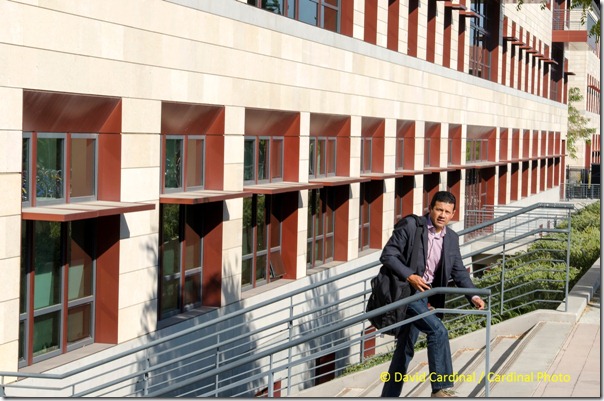- Photo Safaris
- Alaska Bears & Puffins World's best Alaskan Coastal Brown Bear photo experience. Small group size, idyllic location, deluxe lodging, and Puffins!
- Participant Guestbook & Testimonials Candid Feedback from our participants over the years from our photo safaris, tours and workshops. We don't think there is any better way to evaluate a possible trip or workshop than to find out what others thought.
- Custom Photo Tours, Safaris and Personal Instruction Over the years we've found that many of our clients & friends want to participate in one of our trips but the dates we've scheduled just don't work for them or they'd like a customized trip for their family or friends.
- Myanmar (Burma) Photo Tour Myanmar (Burma) Photo Tour December 2017 -- with Angkor Wat option
- Reviews Go hands-on
- Camera Reviews Hands-on with our favorite cameras
- Lens reviews Lenses tested
- Photo Accessories Reviews Reviews of useful Photo and Camera Accessories of interest to our readers
- Useful Tools & Gadgets Handy tools and gadgets we've found useful or essential in our work and want to share with you.
- What's In My Camera Bag The gear David Cardinal shoots with in the field and recommends, including bags and tools, and why
- Articles About photography
- Getting Started Some photography basics
- Travel photography lesson 1: Learning your camera Top skills you should learn before heading off on a trip
- Choosing a Colorspace Picking the right colorspace is essential for a proper workflow. We walk you through your options.
- Understanding Dynamic Range Understanding Dynamic Range
- Landscape Photography Tips from Yosemite Landscape Photography, It's All About Contrast
- Introduction to Shooting Raw Introduction to Raw Files and Raw Conversion by Dave Ryan
- Using Curves by Mike Russell Using Curves
- Copyright Registration Made Easy Copyright Registration Made Easy
- Guide to Image Resizing A Photographers' Guide to Image Resizing
- CCD Cleaning by Moose Peterson CCD Cleaning by Moose Peterson
- Profiling Your Printer Profiling Your Printer
- White Balance by Moose Peterson White Balance -- Are You RGB Savvy by Moose Peterson
- Photo Tips and Techniques Quick tips and pro tricks and techniques to rapidly improve your photography
- News Photo industry and related news and reviews from around the Internet, including from dpreview and CNET
- Getting Started Some photography basics
- Resources On the web
- My Camera Bag--What I Shoot With and Why The photo gear, travel equipment, clothing, bags and accessories that I shoot with and use and why.
- Datacolor Experts Blog Color gurus, including our own David Cardinal
- Amazon Affiliate Purchases made through this link help support our site and cost you absolutely nothing. Give it a try!
- Forums User to user
- Think Tank Photo Bags Intelligently designed photo bags that I love & rely on!
- Rent Lenses & Cameras Borrowlenses does a great job of providing timely services at a great price.
- Travel Insurance With the high cost of trips and possibility of medical issues abroad trip insurance is a must for peace of mind for overseas trips in particular.
- Moose Peterson's Site There isn't much that Moose doesn't know about nature and wildlife photography. You can't learn from anyone better.
- Journeys Unforgettable Africa Journeys Unforgettable -- Awesome African safari organizers. Let them know we sent you!
- Agoda International discounted hotel booking through Agoda
- Cardinal Photo Products on Zazzle A fun selection of great gift products made from a few of our favorite images.
- David Tobie's Gallery Innovative & creative art from the guy who knows more about color than nearly anyone else
- Galleries Our favorite images
All new Superzooms face-off: Nikon 18-300mm, Sigma 18-250mm, Tamron 18-270mm
All new Superzooms face-off: Nikon 18-300mm, Sigma 18-250mm, Tamron 18-270mm
Submitted by David Cardinal on Tue, 10/02/2012 - 16:57
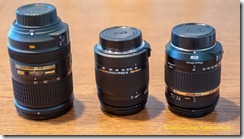 With all the well-justified hype over the full-frame camera launches this fall, APS-C (Nikon DX) format shooters may be feeling a little unloved. Without a D400 or D7100 to crow about, they’re left with a short list of fun, new stuff. Fortunately, there has been activity in the smaller-sensor lens space. Over the last year Nikon, Sigma and Tamron have all released updates on their superzooms. Purists will continue to eschew these lenses, but those desiring an all-in-one lens they can couple with their camera body for a travel-friendly package have some new options. I’ve been shooting with all three of them over the last month…
With all the well-justified hype over the full-frame camera launches this fall, APS-C (Nikon DX) format shooters may be feeling a little unloved. Without a D400 or D7100 to crow about, they’re left with a short list of fun, new stuff. Fortunately, there has been activity in the smaller-sensor lens space. Over the last year Nikon, Sigma and Tamron have all released updates on their superzooms. Purists will continue to eschew these lenses, but those desiring an all-in-one lens they can couple with their camera body for a travel-friendly package have some new options. I’ve been shooting with all three of them over the last month…

The Nikon 18-300 handled the backlighting of this environmental
portrait quite well. @125mm, f/5.5@1/1000s D7000 ISO 1600.
Nikon 18-300mm AF-S VR Lens
 By far the biggest and most expensive DX (APS-C) Superzoom for Nikon cameras, this lens extends the excellent tradition of the 18-200 and 18-200 VR II versions by turning it into a serious “one lens for everything” competitor. Image quality is excellent for a superzoom, similar to that of the 18-200’s newest incarnation, and the build quality is also similar – better than a kit lens, but will break or get mis-aligned more easily than Nikon’s full-up Pro lenses.
By far the biggest and most expensive DX (APS-C) Superzoom for Nikon cameras, this lens extends the excellent tradition of the 18-200 and 18-200 VR II versions by turning it into a serious “one lens for everything” competitor. Image quality is excellent for a superzoom, similar to that of the 18-200’s newest incarnation, and the build quality is also similar – better than a kit lens, but will break or get mis-aligned more easily than Nikon’s full-up Pro lenses.
The price for this awesomeness is both literal, in the form of a $997 price tag, and figurative, in terms of weight and size. This lens is about 50% bigger and heavier than the 18-200 version, and much larger than its Sigma and Tamron competitors, as you can see from the picture above with the three of them sitting side by side. If you don’t want to compromise on image quality or build quality and need an all-in-one superzoom, you don’t need to look further, the Nikon 18-300mm AF-S VR Lens is right for you. You can get this newest of Nikon’s superzooms for $997 from B&H.
If you shoot Canon or Sony, or need a Macro capability, or want something lighter, smaller and less expensive, then read on. Sigma and Tamron haven’t been standing still in this category and have both released upgraded versions of their superzoom lenses.

The Sigma 18-250mm Macro Lens is fully competent for a
“day in the fields” photo shoot like this one.
Sigma 18-250mm Macro Lens
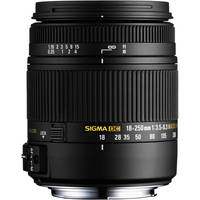 Sigma has slowly been moving upmarket with its mid-range zoom lenses. The Sigma 18-250mm Macro Lens is no exception. It is a small, capable lens that takes images that are perfectly acceptable for a superzoom model. The updated build and image quality comes with a slight bump in price. The new model is $549 from B&H.
Sigma has slowly been moving upmarket with its mid-range zoom lenses. The Sigma 18-250mm Macro Lens is no exception. It is a small, capable lens that takes images that are perfectly acceptable for a superzoom model. The updated build and image quality comes with a slight bump in price. The new model is $549 from B&H.
The newest version features a unique macro capability, close-focusing down to about a foot. You can see a quick example of this capability in the following two images. The first was taken at 18mm, the second one zoomed in to 250mm at the lens’s minimum focusing distance of about 14 inches.
Test image using Sigma 18-250mm Macro lens zoomed out to 18mm.
Same test scene zoomed in to 250mm at minimum focusing distance (MFD) on the Sigma
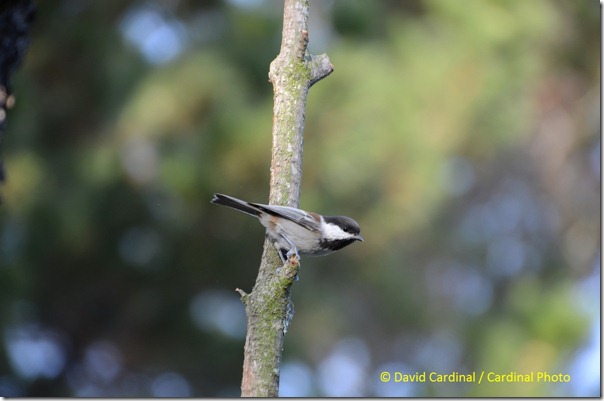
Built-in focus motors make all three of these lenses a plausible choice for wildlife photography.
Even with the “focal multiplier” of a small sensor, they aren’t always going to be long enough.
The Tamron 18-270mm Lens did a fine job of this Chestnut-backed Chickadee image,
but even at 270mm at 10 feet away the bird is really very small in the frame.
Tamron 18-270mm Lens
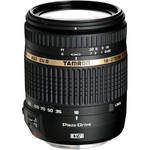 My good friend Jim Large introduced me to an earlier version of this lens when we were in Africa on safari. Like a lot of pros, I have to be hit over the head with quality images before I’ll take a third party lens very seriously I was impressed by the lens and gave it a thumbs up as a less expensive alternative to the (then first version) Nikon 18-200. Now both lenses (the Nikon and the Tamron) have been updated, and their prices increased. The new Tamron version is much faster focusing, and better constructed, than the previous version. It is also more expensive, at $549 after rebate from B&H.
My good friend Jim Large introduced me to an earlier version of this lens when we were in Africa on safari. Like a lot of pros, I have to be hit over the head with quality images before I’ll take a third party lens very seriously I was impressed by the lens and gave it a thumbs up as a less expensive alternative to the (then first version) Nikon 18-200. Now both lenses (the Nikon and the Tamron) have been updated, and their prices increased. The new Tamron version is much faster focusing, and better constructed, than the previous version. It is also more expensive, at $549 after rebate from B&H.
I really enjoyed using the lens and would recommend the new version just as heartily as I did the previous one, as a value alternative to the much larger and more expensive Nikon.
Features across the board
All three of these lenses are chock full of modern features. All feature vibration reduction (Nikon VR, Tamron VC, Sigma OS), with a lens switch to control it. All of them also now feature ultrasonic (lens) motors for fast focusing (Nikon AF-S, Tamron PZD, Sigma HSM). Manual/Auto focus switches are also found on all three lenses. One unique feature of the Nikon is M/A mode – just like it offers on its Pro lenses – which allows the photographer to fine-tune the focus manually even when in AF mode.
All the lenses now offer a “Lock” switch to help avoid the annoying lens creep common to all superzooms when they are carried vertically. All, like most modern lenses, are designed to be controlled from the camera, so they do not have aperture rings. For Nikon shooters, the Tamron’s zoom ring is in the familiar direction, while Canon shooters might be more used to the configuration of the Sigma version.
Vignetting: You get what you pay for
Light fall-off, resulting in a vignetting effect, is a fact of life with superzoom lenses. At long focal lengths all three of these lenses experienced some light falloff, especially when shot wide-open. If you want your birds photographed against a pristine sky, you’ll definitely want to stop down to f/8 if you have enough light to maintain an adequate shutter speed. That said, the amount of vignetting and color shift vary between the lenses. Below are examples from all three lenses. You can see that the Nikon is noticeably better than either of the other two – as befits its larger size and cost.
Nikon 18-300mm Lens f/5.6 @ 300mm
Nikon 18-300mm Lens f/8 @ 300mm
Sigma 18-250 Lens f/6.3 @ 250mm
Sigma 28-250 Lens f/6.3 @ 250mm
Tamron 18-270 Lens f/6.3 @ 270mm
Tamron 18-270 Lens f/16 @ 270mm
Lens Distortion: Do you need to care?
Obviously we all dislike lens distortion, but the price of perfect optics comes with high cost, extra weight, and jumbo size – at least if we plan to use zoom lenses. Minimal distortion lenses also have limited zoom ranges. So if you want to try for an all-in-one lens, you’ll need to live with a certain amount of distortion. That’s just the way it is. Good news comes on a couple fronts though. First, superzooms are getting better each year. They are quicker to focus, and have lower distortion than their predecessors. Second, tools for correcting distortion have become quite good, and quite common. The images below show the pincushion distortion of the Tamron 18-270mm lens at 65mm. The first one is uncorrected, and the second is corrected using the default settings for the lens’s profile in Adobe Photoshop CS6:
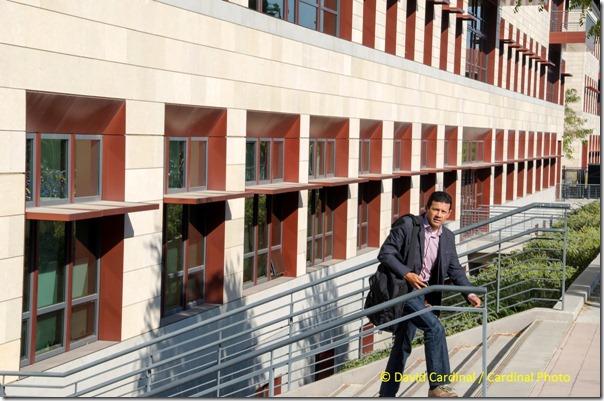
Uncorrected Tamron image showing slight pin-cushion distortion on the window line.
Same image corrected using lens profile included with Photoshop CS6.
Which superzoom lens is right for you?
If you’ve been carrying both an 18-200 and a 70-300 lens, and don’t need too much focusing speed at the long end, then the Nikon 18-300 will let you consolidate to one “do-everything” lens. Or if you’ve got an 18-200 that you’re happy with, but wish it could reach a little further, and are willing to tolerate a larger, heavier model, then the Nikon 18-300mm Lens may be perfect for you.
If you need macro capability and don’t want to carry a separate lens, the Sigma 18-250mm DC Macro Lens is a great choice. It is tiny, light, and versatile. Image quality is solid. It doesn’t feel as hefty or quite as rugged as the Tamron, and certainly not as well-built as the Nikon, but it is half the price and size.
For an all-around value champion, I have always liked the Tamron 18-270 lens. With its newest incarnation, Tamron has upgraded the lens with ultrasonic (PZD) focus motors, making it a sweet, little walk around lens for anyone with a DX/APS-C camera.
- Log in to post comments









